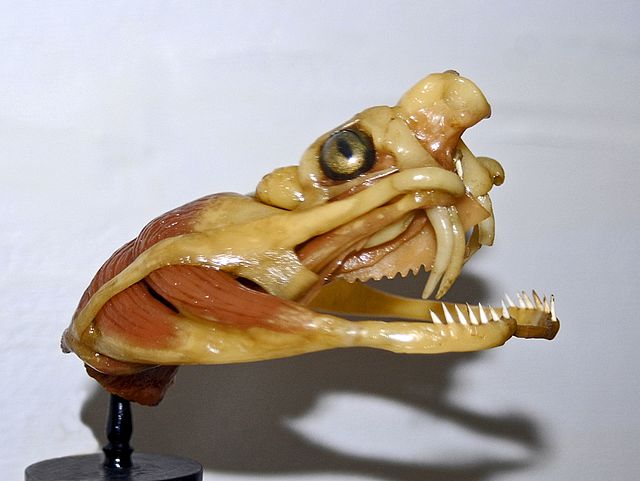Snake venom is a highly toxic saliva containing zootoxins that facilitates in the immobilization and digestion of prey. This also provides defense against threats. Snake venom is injected by unique fangs during a bite, whereas some species are also able to spit venom.
Vipera berus - Venom delivery apparatus
Fully functional membrane
Destroyed membrane
European adder (Vipera berus), one fang with a small venom stain in glove, the other still in place
Necrosis is a form of cell injury which results in the premature death of cells in living tissue by autolysis. The term "necrosis" came about in the mid-19th century and is commonly attributed to German pathologist Rudolf Virchow, who is often regarded as one of the founders of modern pathology. Necrosis is caused by factors external to the cell or tissue, such as infection, or trauma which result in the unregulated digestion of cell components. In contrast, apoptosis is a naturally occurring programmed and targeted cause of cellular death. While apoptosis often provides beneficial effects to the organism, necrosis is almost always detrimental and can be fatal.
Karyolysis (and contraction band necrosis) in myocardial infarction (heart attack)
Cytoplasmic hypereosinophilia (seen in left half of image)
Pseudopalisading seen around necrosis in glioblastoma
Pyknosis in a bile infarct








